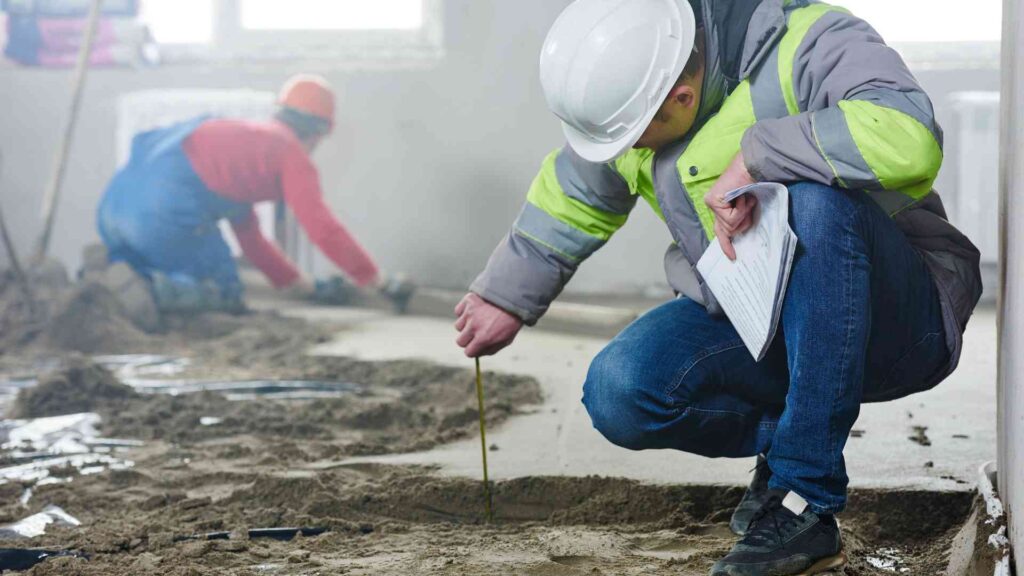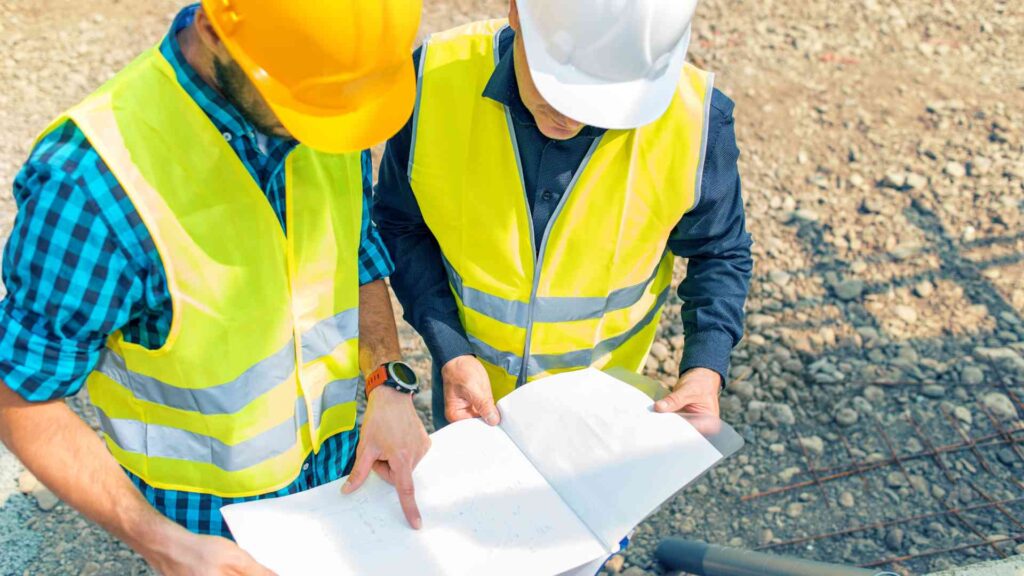When it comes to choosing the right type of concrete for your driveway, it’s important to consider various factors that will impact its longevity, appearance, and overall performance. By understanding the different types of concrete available, as well as the considerations you need to make, you can make an informed decision that will ensure a durable and aesthetically pleasing driveway.
Understanding Different Types of Concrete
Before you make a decision, it’s crucial to familiarize yourself with the various types of concrete available. Each type has its own unique characteristics, strengths, and weaknesses.
Concrete is a versatile and widely used material in construction. It is composed of a mixture of cement, water, and aggregates such as sand or crushed stone. Depending on the specific needs and preferences, different types of concrete can be used to achieve various outcomes.
Plain Concrete
Plain concrete, also known as ordinary concrete, is the most basic type of concrete. It consists of cement, water, and aggregates such as sand or crushed stone. While it offers good durability and affordability, it lacks decorative options.
Plain concrete is commonly used in foundations, sidewalks, and other applications where aesthetics are not a primary concern. It provides a solid and functional surface that can withstand heavy loads and endure harsh weather conditions.
Stamped Concrete
If you’re looking to add a decorative touch to your driveway, stamped concrete is an excellent option. It involves stamping patterns on the surface to simulate the look of brick, stone, or tile. This type of concrete offers versatility and can enhance the aesthetic appeal of your driveway.
Stamped concrete can be customized to match the style and design of your home or landscape. It is available in a wide range of patterns and colors, allowing you to create a unique and visually appealing driveway. Additionally, stamped concrete is durable and requires minimal maintenance, making it a popular choice among homeowners.
Exposed Aggregate Concrete
For a driveway with a more natural and textured appearance, exposed aggregate concrete is a popular choice. It involves exposing the aggregate (such as gravel or crushed stone) on the surface, creating a visually appealing and skid-resistant finish.
Exposed aggregate concrete offers a unique and rustic look that can complement various architectural styles. The exposed aggregate not only adds visual interest but also provides a textured surface that improves traction, making it a safe option for driveways.
Colored Concrete
To add a splash of color to your driveway, colored concrete is an ideal choice. Pigments can be added to the mixture, allowing you to customize the look of your driveway. From earth tones to vibrant hues, colored concrete offers endless possibilities for a personalized touch.
Colored concrete can be used to create a striking and eye-catching driveway that stands out from the crowd. Whether you prefer a subtle and understated color or a bold and vibrant shade, colored concrete can transform your driveway into a unique and visually appealing feature.
In addition to its aesthetic benefits, colored concrete also provides the same durability and strength as regular concrete. It is resistant to fading and can withstand the test of time, ensuring that your driveway maintains its vibrant color for years to come.
Factors to Consider When Choosing Concrete for Your Driveway
Choosing the right type of concrete for your driveway is crucial in ensuring its longevity and functionality. While you may already be familiar with the different types of concrete available, there are several factors that you should consider before making your decision. These factors will not only impact the performance of your driveway but also its overall aesthetic appeal.
Climate and Weather Conditions
One of the primary factors to consider is the climate and weather conditions in your area. Different regions experience varying weather patterns, such as freezing temperatures or high humidity. If you live in an area with extreme weather, it’s essential to choose a concrete option that can withstand these conditions. Opting for a durable and weather-resistant concrete will ensure that your driveway remains intact and functional, even during harsh weather events.
Furthermore, considering the climate will also help you determine the appropriate curing time for the concrete. Curing is a critical process that allows the concrete to gain strength and durability. In colder climates, it may take longer for the concrete to cure properly, so selecting a concrete mix that accommodates these conditions is essential.
Maintenance and Durability
Another crucial factor to consider is the level of maintenance you are willing to undertake and how long you expect your driveway to last. Different types of concrete require varying degrees of maintenance to retain their appearance and durability. Some concrete options may require more frequent sealing or repairs to ensure their longevity.
Additionally, it’s important to assess the durability of the concrete. A driveway is subjected to heavy loads, such as vehicles, on a regular basis. Choosing a concrete mix that is specifically designed for high-traffic areas will ensure that your driveway can withstand the weight and pressure without cracking or deteriorating.
Aesthetics and Design
Your driveway is not just a functional space; it is also an essential part of your home’s curb appeal. Therefore, considering the aesthetics and design of the concrete is crucial. Different types of concrete offer various colors, textures, and patterns that can enhance the overall appearance of your home’s exterior.
For a cohesive look, you may want to choose a concrete option that complements the architectural style of your home. Whether you prefer a sleek and modern design or a more traditional and rustic look, there are concrete options available to suit your preferences. Additionally, you can also explore decorative concrete techniques, such as stamped or stained concrete, to add a unique touch to your driveway.
Cost Considerations
While cost should not be the sole determining factor, it is an important consideration when choosing the right concrete for your driveway. Evaluate the upfront costs of each concrete option and compare them against their long-term savings and return on investment.
Keep in mind that opting for a cheaper concrete option may result in higher maintenance and repair costs in the long run. On the other hand, investing in a higher-quality concrete may require a larger upfront investment but can save you money on future repairs and replacements.
By carefully considering these factors, you can make an informed decision when choosing the right concrete for your driveway. Remember, your driveway is not only a functional space but also an integral part of your home’s overall aesthetic appeal.
The Process of Installing a Concrete Driveway
Installing a concrete driveway involves several steps that are crucial for achieving a durable and visually appealing result. Let’s take a closer look at each stage:
Preparing the Driveway Site
Prior to pouring the concrete, thorough preparation of the driveway site is essential. This step ensures a solid foundation and proper drainage for the driveway. The process begins by removing any existing vegetation and debris from the area. This includes grass, weeds, rocks, and any other obstructions that may interfere with the installation process.
Once the site is clear, the ground needs to be leveled to create a smooth and even surface. This may involve using heavy machinery, such as a bulldozer or a bobcat, to remove excess soil or fill in low spots. Proper leveling is crucial to prevent any future issues, such as water pooling or uneven settling of the concrete.
Additionally, ensuring proper drainage is essential to prevent water from accumulating on the driveway. This may involve grading the site to create a slight slope away from the house or installing a drainage system to redirect water away from the driveway.
Pouring the Concrete
Once the driveway site is properly prepared, it’s time to pour the concrete. This step requires precision and expertise to ensure a smooth and level surface. A professional contractor will carefully calculate the amount of concrete needed based on the size and thickness of the driveway.
The concrete is then delivered to the site in a ready-mix truck or mixed on-site using a concrete mixer. It is crucial to evenly distribute the concrete across the entire driveway area to avoid weak spots or uneven surfaces. The contractor will use tools such as rakes and shovels to spread the concrete and ensure it reaches all corners and edges.
Proper leveling is also crucial during the pouring process. The contractor will use various tools, such as a screed or a bull float, to achieve a smooth and even surface. This step requires careful attention to detail to eliminate any bumps, low spots, or unevenness in the concrete.
Finishing and Curing the Concrete
After the concrete is poured, it needs to be finished and cured to achieve the desired strength and durability. Finishing involves several steps to enhance the appearance and texture of the concrete surface.
First, the contractor will use a tool called a float to smooth out any imperfections and create a uniform surface. This step helps to eliminate any trowel marks or air pockets that may have formed during the pouring process.
Next, the contractor may apply various finishing techniques to add texture or decorative patterns to the concrete. This can include techniques such as stamping, staining, or exposing the aggregate. These techniques not only enhance the visual appeal of the driveway but also provide additional traction and slip resistance.
Once the finishing is complete, the concrete needs to be properly cured to allow it to harden and strengthen over time. Curing is a critical step that involves keeping the concrete moist and protected from extreme temperatures for a specified period. This can be achieved by covering the concrete with plastic sheeting, applying a curing compound, or using water curing methods.
Adequate curing is essential for the long-term durability and longevity of the concrete driveway. It allows the concrete to reach its maximum strength and minimizes the risk of cracking or other damage in the future.
By following these steps and hiring a professional contractor with experience in concrete driveway installation, you can ensure a well-executed and long-lasting addition to your property.
Common Mistakes to Avoid When Choosing and Installing Concrete
While it’s important to choose the right type of concrete and follow the proper installation process, it’s equally crucial to avoid common mistakes that can compromise the quality and performance of your driveway:
Incorrect Concrete Mix
Using the wrong concrete mix can lead to issues such as cracking, scaling, or poor durability. It’s essential to consult with professionals who can guide you towards the correct mix based on your specific needs and local conditions.
Poor Site Preparation
Rushing through the site preparation process can result in an uneven or unstable driveway. Take the time to properly remove any debris, compact the soil, and address any drainage issues to ensure a solid foundation for your driveway.
Inadequate Concrete Curing
Rushing the curing process or failing to provide sufficient moisture can weaken the concrete and reduce its lifespan. Follow the recommended curing methods and allow enough time for the concrete to fully cure before subjecting it to heavy use.
By understanding the different types of concrete, considering the relevant factors, and avoiding common mistakes, you can make an informed decision when choosing the right type of concrete for your driveway. A well-chosen and properly installed concrete driveway will provide both functionality and aesthetic appeal for years to come.


